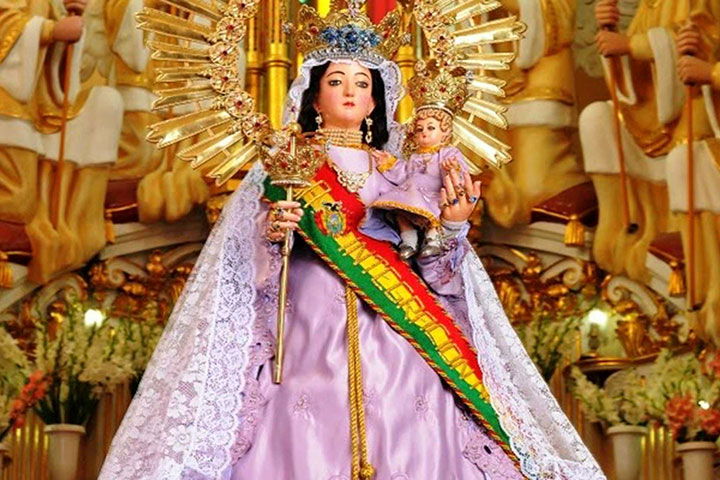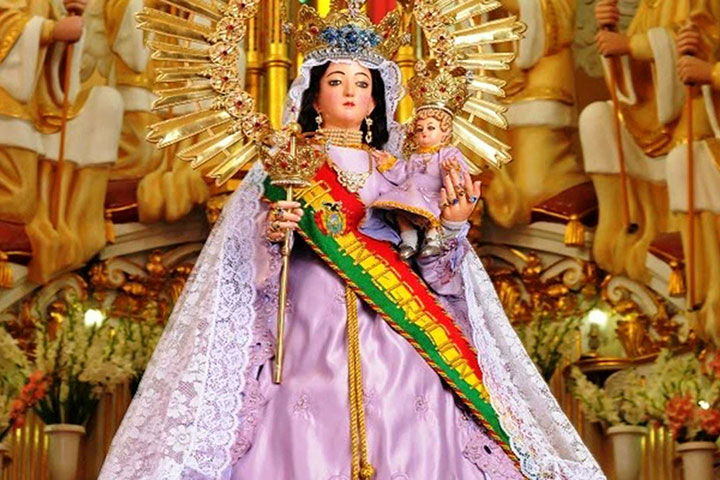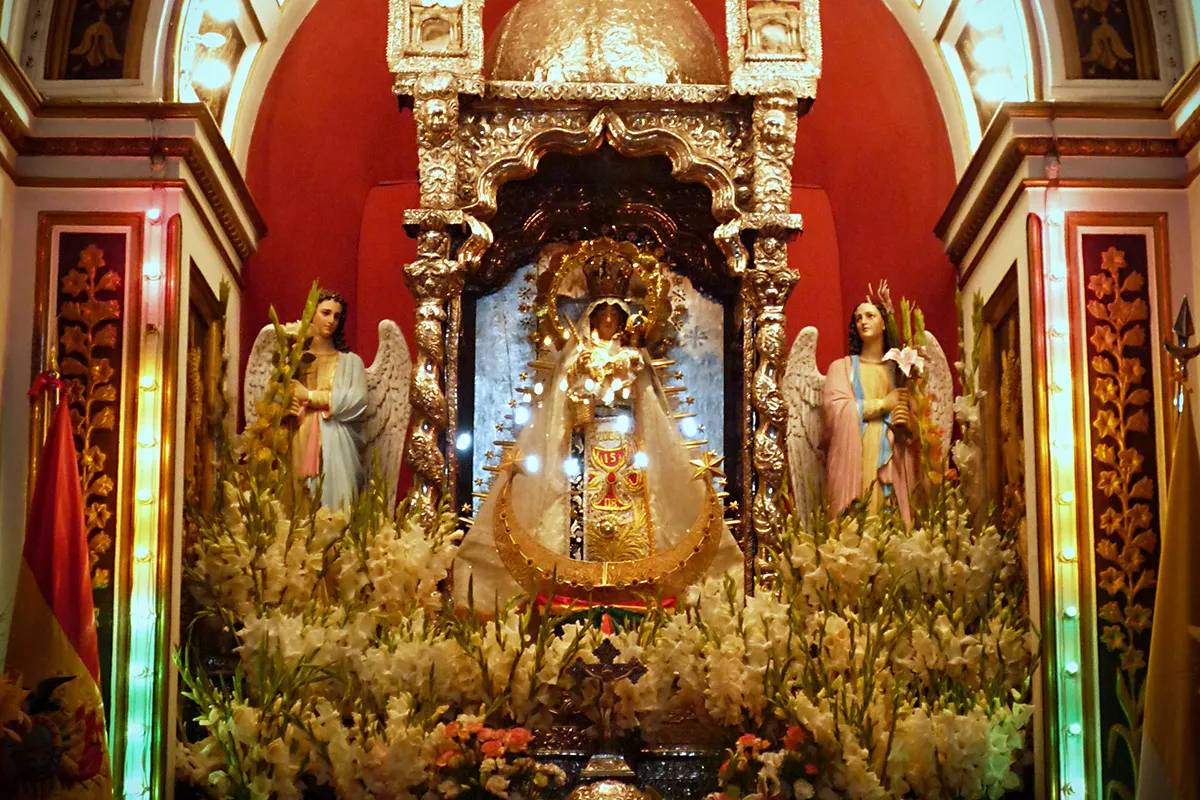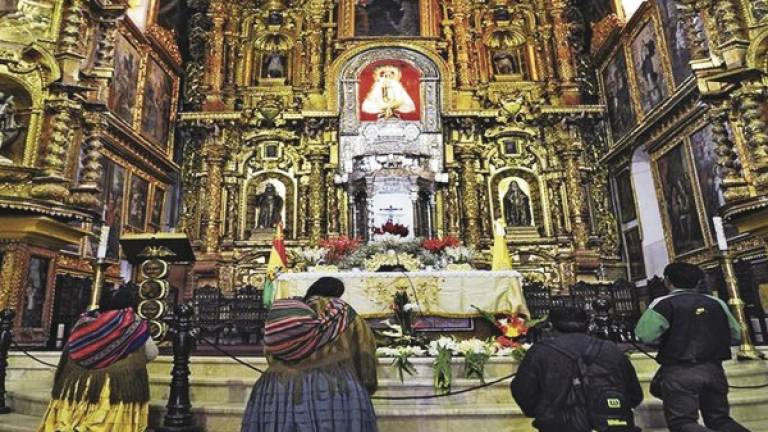Our Lady of Candelaria of Copacabana Bolivia

Feast: August 5th.The Copacabana peninsula enters Lake Titicaca, approaching the islands of the Sun and the Moon, ancient sacred places of the Incas. There, at four thousand eight meters above sea level, the Mother of God wanted to approach her children in order to attract them to the true God. She did it with the utmost delicacy and respect. She did it with the love of a mother who seeks her youngest children. Her face has indigenous features and is all sweetness with her Child in her arms, who seems to fall but does not. The Mother holds him securely. The Child is the great gift that the mother gives. This is how the cult of the "Santísima Virgen de la Candelaria, Nuestra Señora de Copacabana" (Our Lady of Candelaria, Our Lady of Copacabana) arose.
It is an effigy of a little more than four feet modeled entirely in maguey paste and finished in stucco. The body of the image is completely laminated in fine gold and its clothing reproduces the colors and garments of an Inca princess. Her original form remains permanently covered by beautiful cloaks and costumes. Her hair is long on her shoulders.
It was carved by Francisco Tito Yupanqui, descendant of the Inca Huayna Capac. He was an amateur sculptor and although he put a lot of effort into his work, he was inexperienced. His first attempts were rejected one after the other, until finally God rewarded him with this image of the Virgin that was humbly enthroned in a poor church of adobe and stones on February 2, 1583, which makes this Marian sanctuary one of the oldest in the Americas.
The present church dates from 1805 and the image was crowned during the pontificate of Pius XI. As time went by, the faithful donated a great amount of valuable jewels to adorn the image and the temple was filled with gifts and treasures. This wealth was later plundered by generals, presidents and dictators of the time. In spite of this, the "Coyeta", as the Quechua and Aymara people call her, wears rich jewelry around her neck, on her hands and chest, and from her ears hang valuable earrings of precious stones given to her by her devotees. In her right hand she holds a basket and a baton, gift and souvenir of the visit that in 1669 the viceroy of Peru made to her.
The original image never leaves its sanctuary and a copy of it is used for the processions. It is typical of the sanctuary, a basilica since 1949, that those who visit it leave it walking backwards, with the intention of not turning their back on their beloved patron saint.
Her feast was originally celebrated on February 2, the day of the Purification of Mary, and then moved to August 5, with its own liturgy and great popular celebration.



